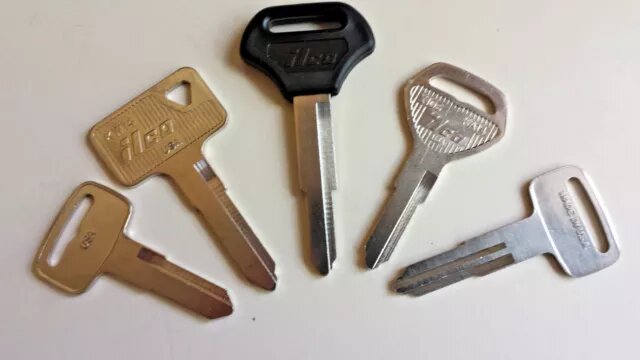How to Read a Key Number
2024-08-02 13:35

Understanding how to read a key number is essential for anyone dealing with keys, whether for personal use, locksmithing, or security management. Key numbers are used to identify and reproduce keys accurately. They contain specific information about the key's cuts and grooves, ensuring that duplicates are made precisely. This guide will help you understand the components of a key number and how to read it.
What is a Key Number?
A key number, often stamped or engraved on the key, is a unique identifier that represents the key's specific cutting pattern. This number is crucial for creating duplicates without the original key. Key numbers are used in various settings, including residential locks, office buildings, and vehicles.
Components of a Key Number
Key numbers typically consist of a series of letters and numbers. The format and meaning can vary depending on the manufacturer and the type of lock. However, most key numbers include the following components:
Key Blank Code: This part identifies the key blank, which is the uncut key before it is shaped to fit a lock. The key blank code is essential for locksmiths to select the correct blank for duplication.
Bitting Code: The bitting code indicates the specific cuts and depths required to match the lock's pins. Each position on the key corresponds to a pin in the lock, and the code represents the depth of each cut.
Manufacturer Code: Some keys include a manufacturer code that identifies the brand or specific series of the key. This information is crucial for sourcing the correct key blank and ensuring compatibility with the lock.
How to Read a Key Number?
To read a key number accurately, follow these steps:
Locate the Key Number: The key number is usually found on the bow (head) of the key or along the blade. In some cases, it may be on a tag attached to the key. Clean the key if necessary to make the number more visible.
Identify the Key Blank Code: This code is often a combination of letters and numbers. It corresponds to the specific shape and profile of the key. For example, a common key blank code might be “KW1” for a Kwikset key.
Interpret the Bitting Code: The bitting code is a sequence of numbers, each representing the depth of a cut on the key. For instance, a bitting code like “52314” means the first cut is at depth 5, the second at depth 2, and so on. The depth usually ranges from 0 to 9, with higher numbers indicating deeper cuts.
Look for Additional Codes: Some keys may have extra codes indicating the manufacturer or specific lock series. These codes help ensure that the correct blank and cutting specifications are used.
Consult Key Code Manuals: Locksmiths often use key code manuals or databases to interpret key numbers. These resources provide detailed information on key blanks, bitting patterns, and manufacturer specifications.
Practical Example
Let's consider a practical example: a key with the number “KW1 52314”. Here's how to read it:
KW1: This is the key blank code indicating a Kwikset key.
52314: This is the bitting code. It tells the locksmith the depth of each cut:
First cut: Depth 5
Second cut: Depth 2
Third cut: Depth 3
Fourth cut: Depth 1
Fifth cut: Depth 4
By interpreting these codes, a locksmith can select the correct blank and cut the key to match the original.
Tips for Accuracy
Double-check the Key Number: Ensure that the number is read correctly. Mistakes can lead to an unusable duplicate.
Use Proper Tools: Professional key cutting machines and accurate code manuals are essential for precise duplication.
Verify with the Lock: After cutting, always test the new key in the lock to ensure it works smoothly.
Conclusion
Reading a key number involves understanding the key blank code, bitting code, and any additional manufacturer codes. By following the steps outlined in this guide, you can accurately interpret key numbers and ensure precise duplication. Whether you're a locksmith or a homeowner looking to understand your keys better, knowing how to read a key number is a valuable skill that can save time and ensure security. If you are in a hurry to get home but have lost your key, you can use lock picking tools to open the door first, and then make a new key when you have time.
 Promotion: 5% Discount Code: 5vip
Promotion: 5% Discount Code: 5vip